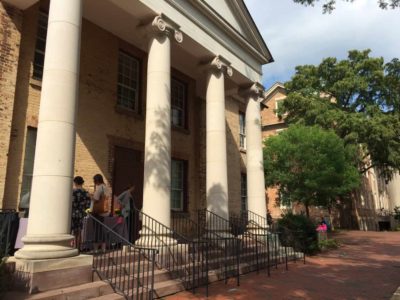When the decision is made to make a change within the Singaporean education system, the change takes just one year. One year later the change has been fully implemented in every administration, every school, every classroom, and within every educational stake holder organization. Impressive, right? But how are they able to do this?
After spending one week involved in the education system of Singapore, one sentiment stood above the rest:
Shared vision.
Every citizen is considered a stake holder in education. Singaporeans are quick to let you know that they have no natural resources in their small country. Instead of focusing on this lack of natural resources, they turn to their people — the only resource they do have. The catch phrase is human capital. Within every Singaporean five year plan presented by the government, there is a focus on the people and a large focus on the education of their people.
So how do they implement changes in just one year? Success breeds success. There is a history of success in educational implementations, even as pedagogical approaches change and new technology is introduced in the classroom. This history of success allows for easy buy-in. Everyone stands behind the changes presented for the education system.
Everyone buys in.
While in Singapore, I had the opportunity to talk to a local shopkeeper. When she found out we were educators here to look into Singaporean education, she swelled with pride and only had good things to say. She commented on how good the system was and how it gave everyone a chance for success. She told us about her son, who was born in November, who was considered slower than his peers born in January who had a full 11 months of brain growth and development ahead of her son, since school enrollment is based on when children were born within a January to December school year. However, because of the tracking (yes, that evil word we no longer use in North Carolina), she says that her son has success every year. When he gets behind, he is allowed to move to a lower track. When he gets ahead, he is allowed to move to a higher track. The fluidity of the tracking system benefits her son greatly. When asked, she could not find anything negative to say about her son’s education.
I know that she was just one person, but how amazing is it to have that kind of buy in? To the point where even local people only have good things to say about their schools and their teachers and their educational decision makers? To me she was the embodiment of the common vision shared by the Singaporean citizens.
So how do we start creating a common vision here in North Carolina?
Do we start small within departments within schools and work our way out? Do we wait for a vision from the top and hope buy-in comes via a trickledown effect? Can we start at both ends and meet in the middle?





